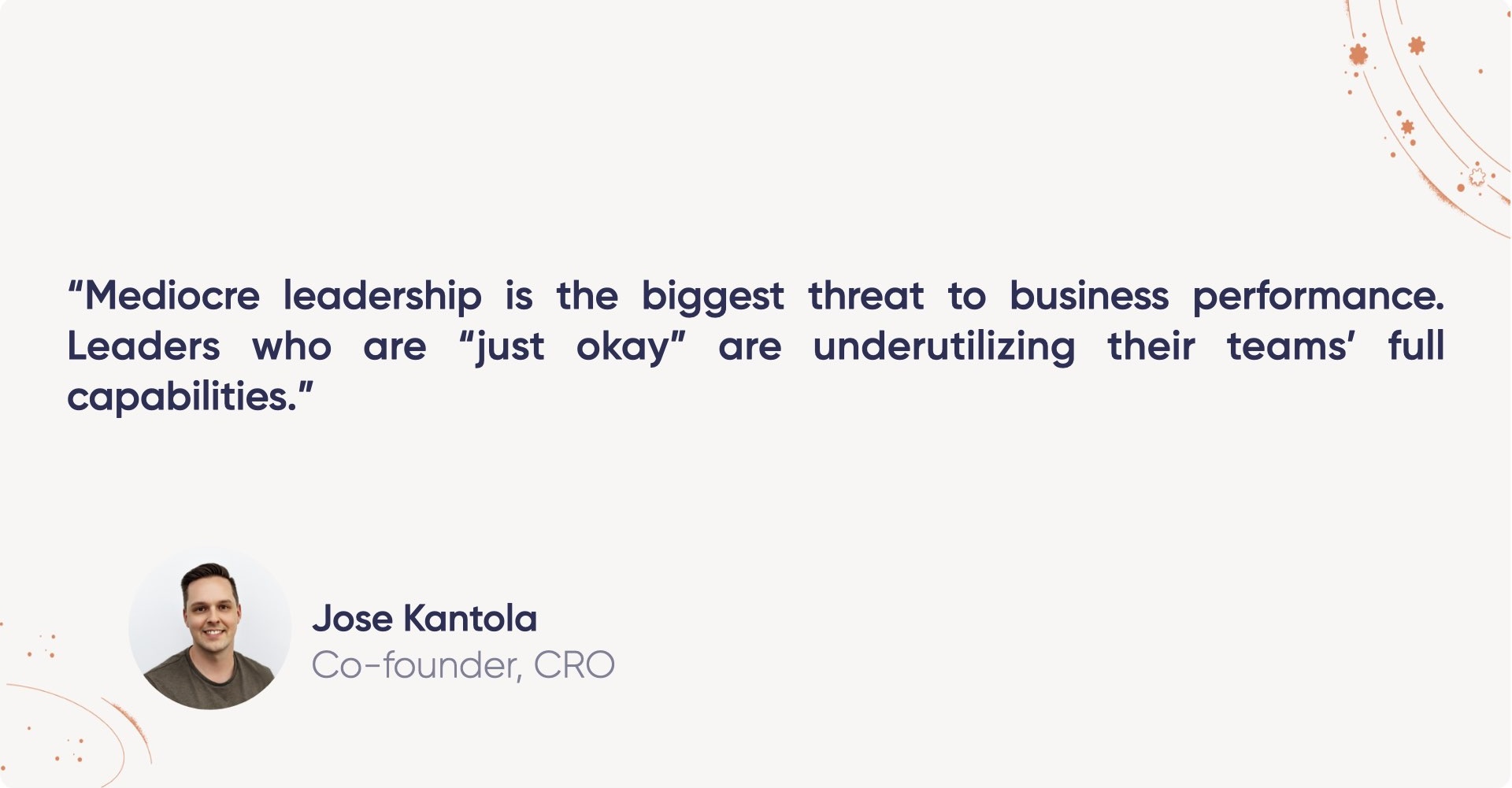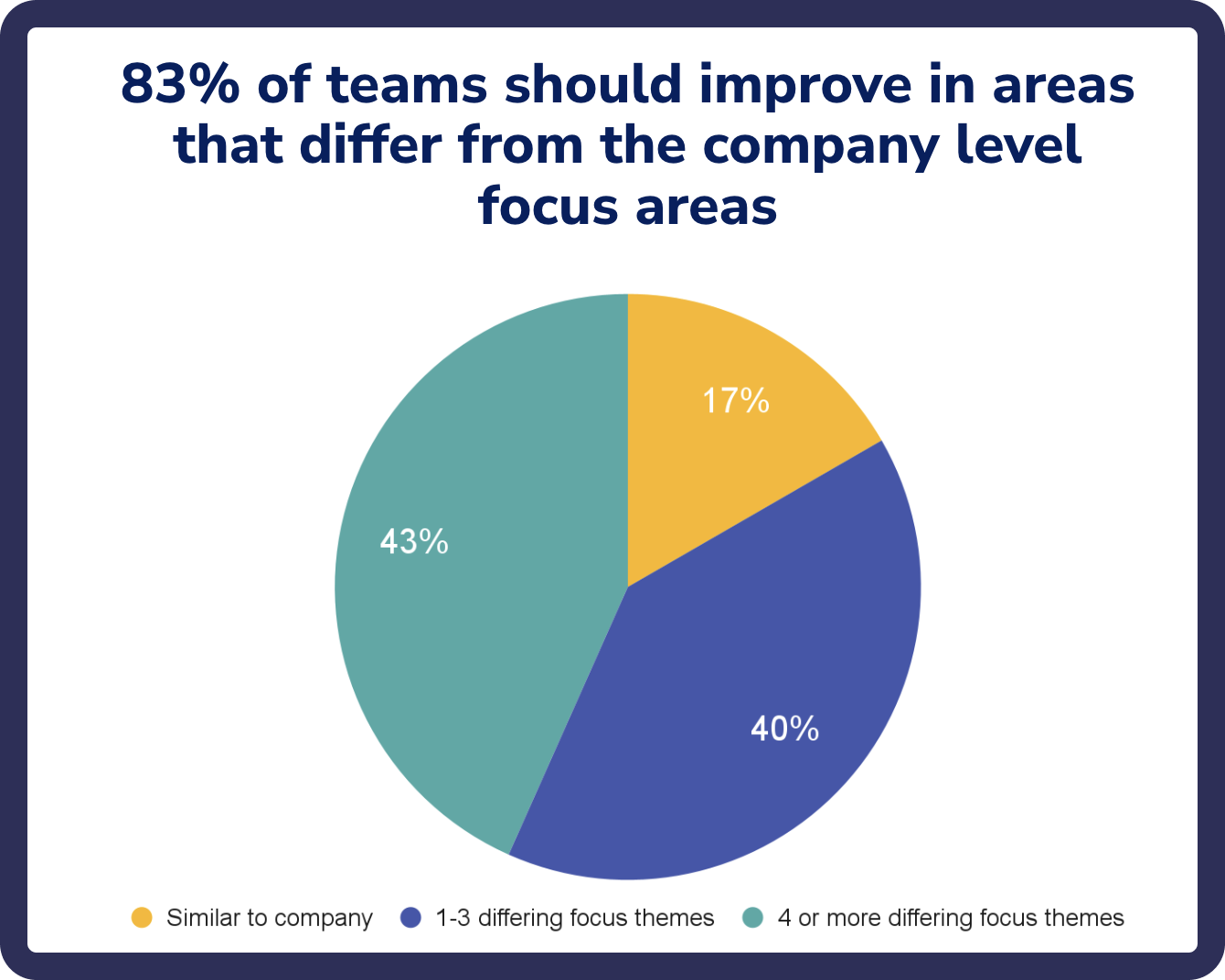Performance Enablement and Its Role in Employee Engagement
June 13, 2025Bad leadership creates problems that hurt everyone. Teams don't work well together. Good employees quit. We need a better way. It's called performance enablement. This article will cover what performance enablement is, its key pillars, and benefits.
Bad leadership creates problems that hurt everyone. Teams don’t work well together. People feel unsafe speaking up. Good employees quit.
Most companies still use old ways to manage performance. They do yearly reviews. Bosses set goals from the top down. They give feedback too late to help. This doesn’t work anymore.
We need a better way. It’s called performance enablement. This article will cover what performance enablement is, its key pillars, and benefits.
What Is Performance Enablement?
Performance enablement is a strategic approach that focuses on empowering employees with the right support.
On the level of organization, performance enablement helps leaders do their job better. It gives them what they need to support their teams. This is different from old performance management that just tracks and judges people.
Here’s how it works:
First, you gather information. You use surveys about how people feel at work. You track how well teams perform. You get feedback from all directions. You see how people work together.
Next, you combine this with company resources. These include guides for tough conversations. Company culture handbooks. Leadership rules and tips.
Finally, you give leaders personal advice right when they need it. You show them exactly what to do next.
The big difference is timing. Leaders get help when problems happen, not months later. They get clear steps they can take right away.
Explore Leadership Enablement
Turn insights into action with Teamspective's Leadership Enablement solution.
Performance Enablement vs. Performance Management: What’s the Difference?
To understand why performance enablement works better, let’s compare it to old performance management methods.
Performance Management
Performance Management focuses on regular performance reviews. It’s a system that stays the same over time. It tells employees how they are doing and what they should focus on next. It mostly looks at short-term performance and recent events. The process relies heavily on reviews every three months, six months, or once a year. These reviews look backward at what already happened.
Performance Enablement
Performance Enablement works completely differently. It focuses on helping employees perform and grow all the time. It gives real-time insights that change as needed. Instead of telling employees what to do, it gives them power to help themselves. It provides the tools and information they need to succeed.
Here are the key differences I’ve seen:
\
| Performance | Management | Enablement |
|---|---|---|
| Main Focus | Regular performance reviews | Ongoing employee support and growth |
| How It Works | Stays the same | Changes as needed |
| Employee's Role | Gets told what to do | Gets power to help themselves |
| Employee Potential | Doesn't see full potential | Helps employees reach their best |
| Time Focus | Looks backward | Looks forward to growth |
| Performance View | Focuses too much on recent work | Uses both planned and unplanned feedback |
| Review Schedule | Every 3-12 month | Regular checkpoints and talks between the employee and the manager |
The Key Pillars of Performance Enablement
Now that we understand what performance enablement is, let’s explore the essential elements that make it work effectively in practice.
1. Proactive Leadership Development
Here’s a big problem: 75% of HR leaders say managers feel overwhelmed. They don’t know how to lead change or build good team culture. Generic training doesn’t fix this.
Leaders need personal coaching when they face real problems. When a team struggles, the leader shouldn’t have to take five online courses to find help. Smart leadership development tools can now give instant advice based on your company’s knowledge and current data.
2. Timely Feedback
Most feedback comes too late to help. By the time yearly reviews happen, the important moments are long gone.
Good feedback flows all the time. When team happiness drops or work patterns change, leaders need to know now. This lets them fix small problems before they become big ones.
3. Growth Mindset
Performance enablement changes the conversation. Instead of asking “what went wrong,” you ask “how can we improve?” When leaders have growth-focused information, they can have better talks with team members about careers and skills.
This works really well with skill frameworks. When you collect data about specific leadership competencies, you can spot gaps in individuals and across the whole company. This helps you know what training matters most.
4. Empowerment and Collaboration
We’ve learned something important from studying how teams work together. The best leaders do things differently. They spend more time talking with senior leaders. They have more meetings with other departments. This helps them understand the big picture and company strategy better.
This information helps other leaders see what they can do to be more effective.
5. Continuous Learning
The goal isn’t just one training session. It’s creating ongoing learning cycles with the help of the right employee development tools. When leaders take action based on insights, they should be able to see results quickly and change their approach if needed.
Benefits of Performance Enablement
Understanding the theory is one thing, but what really matters is the tangible impact performance enablement can have across your organization. Here’s what you can expect to see.
For Companies
Performance enablement gives real business results. Companies see better performance because they keep good people. Losing employees is expensive. It can cost as much as one full year of salary to replace someone.
More importantly, it fixes the hidden costs of okay leadership. When leaders don’t reach their potential, you lose opportunities across your whole team. This can go unnoticed for years because it’s not dramatic enough to demand immediate action.

For Leaders and Managers
The biggest benefit is saving time. At ZoomInfo, we helped cut the time needed for 360 feedback by half. Leaders get automatic summaries and prepared talking points. They can focus on real conversations instead of paperwork.
Leaders also feel more confident with data-backed insights. Instead of guessing what their team needs, they have clear priorities. These come from engagement data, work patterns, and feedback from peers.
Watch the full webinar here.
For Employees
Employees get more frequent, relevant conversations with their managers. Instead of generic development talks, they get personal guidance. This is based on their actual performance data and career goals.
This leads to faster skill growth and clearer paths for advancement.
Best Practices for Successful Performance Enablement
Based on my experience helping companies build these systems, here are the practices that separate successful initiatives from failed attempts.
Step 1. Start with Clear Goals
I always recommend mapping opportunities first. Create a plan based on what matters most. It’s better to pick one area, like employee engagement, and do it really well from start to finish. This is better than collecting five different types of data without clear next steps.
The most important thing is the final result: what leaders can actually do with the insights.
Step 2. Train Managers Well
The launch phase is critical for success. You can’t create the same excitement and willingness to try new approaches if you do a poor launch and then start pushing people six months later.
When you design, implement, and launch something new, you should see improvements within weeks, not months. Make sure leaders understand not just how to use the employee engagement tools, but why the insights matter for their team’s success.
Step 3. Pick the Right Technology
Look for platforms that combine engagement, performance, and collaboration insights in one place. We’ve found that about 80% of team-level focus areas don’t match company-level priorities. This means every leader needs personal recommendations, not just company-wide initiatives.

The technology should also work seamlessly with communication platforms like Slack or Microsoft Teams. When insights are delivered where people already work, more people will use them.
Step 4. Build a Culture of Feedback
One crucial insight: executive teams often see things completely differently than the rest of the organization. I recently saw a 1000-person engagement survey where executives’ responses were 20% different from company averages.
This is why measurement is so important. You can’t rely on executive gut feelings alone. You need systematic feedback from all levels of the organization.
Step 5. Measure and Keep Improving
Speed to action is everything. If a human needs to manually analyze employee survey results, they’ll typically schedule time next Thursday, spend two hours processing everything, and then start planning next steps. AI can do this analysis instantly, getting leaders to actionable insights immediately.
Track metrics like engagement scores, feedback quality, and leadership behavior changes. But remember: you should be able to see impact within three months, not years.
Final Thoughts
Performance enablement gives organizations a competitive edge. It’s for companies willing to move beyond traditional performance management. When you give leaders real-time insights, personal guidance, and clear next steps, you create conditions where both leadership quality and employee engagement can thrive.
Companies that embrace this approach will build stronger cultures. They’ll keep top talent and adapt more quickly to changing business conditions. The question isn’t whether to invest in performance enablement. It’s whether you can afford not to.
Ready to change how your leaders support their teams? Start by finding one area where better insights could drive immediate improvements. Then build from there.



